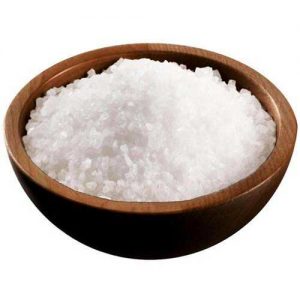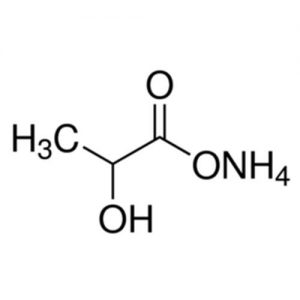- Have any questions?
- 91-22-23726950
- 91-22-23774610

Sodium Tungstate
May 10, 2019
Strontium Peroxide
May 10, 2019Sorbic Acid
Muby Chemicals established in the year 1976, is pioneer in Manufacturing Chemicals for Oil and Gas Exploration, Hydraulic Fracturing (Fracking) and coiled tube Chemicals.Our advanced chemistry leading to an innovative and high-performance product range is coupled with effective on and off site management services.
We are manufacturer of Specialty chemicals, Pharmaceutical Excipients, Fragrance & Flavorchemicals in India, which are of IP, BP, USP, Ph. Eur., FCC or Food Grade, ACS, AR or Analytical Reagent Grade, LR or Laboratory Reagent Grade, Pure and Technical Grades of various chemicals.
Sorbic acid, or 2,4-hexadienoic acid, is a natural organic compound used as a food preservative. It has the chemical formula CH3(CH)4CO2H. It is a colourless solid that is slightly soluble in water and sublimes readily. The E numbers is E200 for Sorbic acid.
We offer both plain and encapsulated sorbic acid.
Sorbic Acid BP Grade
Ph Eur
C6H8O2 — 112.1 — 22500-92-1
Action and use: Antimicrobial preservative.
DEFINITION
(E,E)-Hexa-2,4-dienoic acid.
Content: 99.0 per cent to 101.0 per cent (anhydrous substance).
CHARACTERS
Appearance: White or almost white, crystalline powder.
Solubility: Slightly soluble in water, freely soluble in ethanol (96 per cent).
IDENTIFICATION
First identification A, C.
Second identification A, B, D.
A. Melting point: 132 °C to 136 °C.
B. Ultraviolet and visible absorption spectrophotometry.
C. Infrared absorption spectrophotometry.
D. Dissolve 0.2 g in 2 mL of ethanol (96 per cent) and add 0.2 mL of bromine water. The solution is decolorised.
TESTS
Solution S: Dissolve 1.25 g in ethanol (96 per cent) and dilute to 25 mL with the same solvent.
Appearance of solution: Solution S is clear and colourless.
Aldehydes: Maximum 0.15 per cent, calculated as C2H4O.
Heavy metals: Maximum 10 ppm.
Water: Maximum 1.0 per cent, determined on 2.000 g.
Sulfated ash: Maximum 0.2 per cent, determined on 1.0 g.
ASSAY: Dissolve 0.1000 g in 20 mL of ethanol (96 per cent). Using 0.2 mL of phenolphthalein solution as indicator, titrate with 0.1 M sodium hydroxide until a pink colour is obtained. 1 mL of 0.1 M sodium hydroxide is equivalent to 11.21 mg of C6H8O2.
Sorbic Acid USP Grade
C6H8O2 112.13
2,4-Hexadienoic acid, (E,E)-; 2,4-Hexadienoic acid.
(E,E)-Sorbic acid; Sorbic acid [110-44-1].
Sorbic Acid contains not less than 99.0 percent and not more than 101.0 percent of C6H8O2, calculated on the anhydrous basis.
Identification:
A: To a solution of 200 mg in 2 mL of alcohol add a few drops of bromine: the color is discharged.
B: A 1 in 400,000 solution in isopropyl alcohol exhibits an absorbance maximum at 254 ± 2 nm.
Melting range: between 132 and 135 .
Water, Method: not more than 0.5%.
Residue on ignition: not more than 0.2%.
Heavy metals, Method: 0.001%.
Assay: Dissolve about 250 mg of Sorbic Acid, accurately weighed, in a mixture of 50 mL of methanol and 25 mL of water that previously has been neutralized with 0.02 N sodium hydroxide. Add phenolphthalein and titrate with 0.1 N sodium hydroxide to the first pink color that persists for at least 30 seconds. Each mL of 0.1 N sodium hydroxide is equivalent to 11.21 mg of C6H8O2.
Sorbic Acid FCC Food Grade
2,4-Hexadienoic Acid
CH3CH CHCH CHCOOH
C6H8O2 Formula wt 112.13
INS: 200 CAS: [110-44-1]
DESCRIPTION
Sorbic Acid occurs as colorless needles or as a white to off white, free-flowing powder. It is slightly soluble in water. One gram dissolves in about 10 mL of ethanol and in about 20 mL of ether.
Function: Preservative; mold inhibitor.
REQUIREMENTS
Identification:
A. Add a few drops of bromine to 2 mL of a 1:10 solution in alcohol. The color disappears.
B. A 1:400,000 solution in isopropanol exhibits an absorbance maximum at 254 + or – 2 nm.
Assay: Not less than 99.0% and not more than 101.0% of C6H8O2, calculated on the anhydrous basis.
Lead: Not more than 2 mg/kg.
Melting Range: Between 132° and 135°.
Residue on Ignition: Not more than 0.2%.
Water: Not more than 0.5%.
Encapsulated sorbic acid is made by encapsulateing any grade of sorbic acid with hydrogenated sorbic acid.




